

Types of Exercise
While there are many types of exercises, routines and programs out there (some good, some not), for seniors and tennis athletes, some of the most important aspects of exercising and training are to be committed, stick with a program that matches your goals, mix up your routines every 2-3 weeks within a 4-6 week Phase and use proper form and technique.
A training session should be 45 -60 minutes depending on if you're training for endurance, strength and what type of routines your using. How often you workout each week depends on your fitness level, goals, preferences and metabolism. Generally speaking, you should workout each body part two times a week depending on how you group certain body parts and workout days. In my video exercise and training programs I go further into detail about intensity and duration, sets, reps, progression and form. Below are just some examples of the different types of exercises and modalities to incorporate into your routine.
Warm Up/Flexibility/Stability Exercises
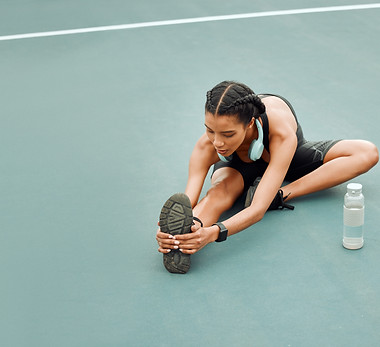
Warming up and stretching your muscles is so important. It improves your circulation, warms up your muscles, increases your range of motion, increases flexibility and balance while strengthening your spine. This should be the first part of every training program.
Core Exercises
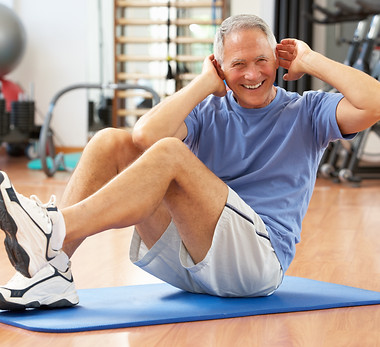
Having a strong core is so important as it connects your upper body to your lower body. It consists of the lumbar, pelvic and hips complex. With a good core you have a stronger back, abs and hips. Especially for seniors these are important to prevent a lower arched back and weak hips. Tennis athletes need a strong core since tennis is a rotational sport and includes a wide range of motion.
Plyometric Exercises
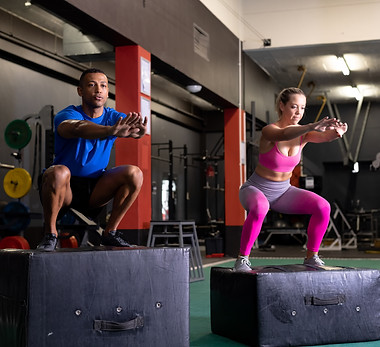
Plyometrics (or jumping exercises) increase neuromuscular coordination by training the nervous system and making movements more automatic during activity (training effect).
Examples of plyometrics include jumping from the ground onto the surface of a stable box and squat jumps (squatting down and jumping up explosively). These fast, explosive movements help athletes and fitness enthusiasts build strength, speed, agility (the ability to rapidly change direction, slow down, or speed up), and power (the ability to overcome resistance quickly) and coordination.
Speed, Agility & Quickness (SAQ) Exercises
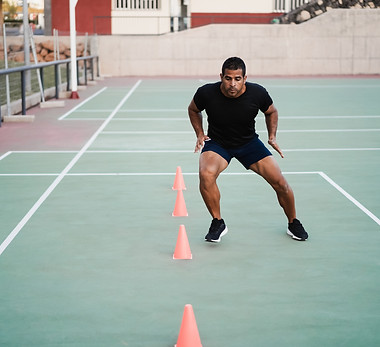
SAQ training strengthens muscles, tendons, and ligaments, making them more resilient to stress and reduces the risk of injury. It also improves proprioception. Tennis athletes will benefit greatly from incorporating SAQ drills, which include using cones, floor ladder, directional change sprints and mirror drills. Seniors also benefit from incorporating SAQ drills to help with balance and agility.
Resistance Weight Training Exercises
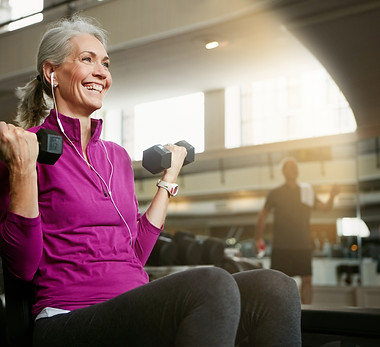
Resistance training with weights is a fundamental part of fitness training which improve stabilization, endurance and strength. I believe using free weights is the best form of resistance training. The number of exercises, sets and reps you use depend on if your going for stability, endurance or strength and on your goals. Going for power, you'll use lower reps while going for endurance you'll use higher reps. For strength you use 8-12 reps. For most, you should incorporate both stability, endurance and strength training for the best results.
Cardio Exercises
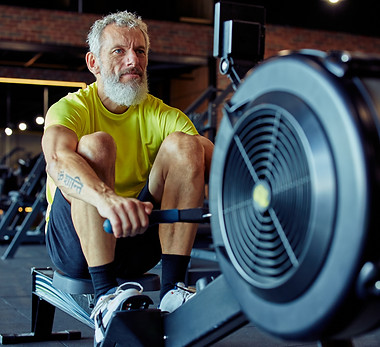
Cardio is another fundamental aspect of training to strengthen your heart and help your blood vessels work well. It improves your stamina and fitness and helps ward off many illnesses. Cardio can lower or manage blood pressure and cholesterol levels. helps manage your weight, which also lowers your risk of heart disease, type 2 diabetes and some types of cancer.
Circuit Training Exercises

Circuit training involves resistance and cardio exercises that work multiple muscle groups and revolves around moving through a series of exercises in quick succession, targeting different muscle groups. By performing a variety of exercises with little rest, circuit training helps to build overall strength and primarily improves calorie burn and heart health. Exercises are performed at a moderate intensity level and workouts can last 30-45 minutes. One example is the 3-3-3 Rule of circuit training, which is 3 circuits of 3 exercises, each performed 3 times.
HIIT Exercises
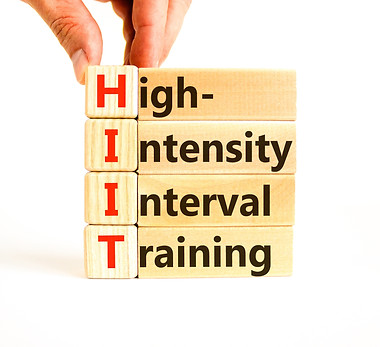
HIIT (High-Intensity Interval Training) are workouts that prioritize short bursts of intense exercise with brief recovery periods, offering an efficient way to improve fitness and burn calories. HIIT can build muscle, help you lose fat, improve oxygen consumption and reduce heart rate and blood pressure. HIIT workouts can vary from 5 - 30 minutes. The difference between circuit and HIIT training is, circuit training focuses on moderate intensity and cardiovascular health, while HIIT focuses on high intensity with strength and endurance. Both can burn calories and improve heart health, but HIIT may have a more significant impact on post-exercise calorie burn known as excess post-exercise oxygen consumption or "EPOC". This means that even after finishing a HIIT session, your body continues to burn calories at an elevated rate due to increased metabolic demands. HIIT is a great routine for people wanting to lose weight and for tennis players, HIIT can simulate the stop-and-start nature of a tennis match, making it a valuable training tool.
Supersets, Drop Sets, Giant Sets Exercises
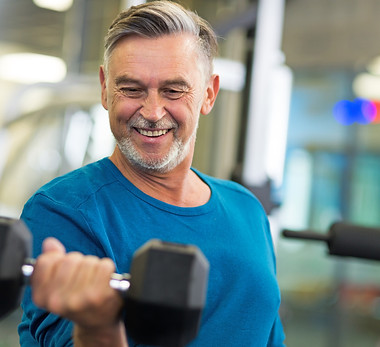
These progressions are a great way to improve endurance. Supersets involve doing one exercise immediately followed by another exercise. An example is doing a dumbbell overhead press followed by dumbbell lateral raises. For power, a superset example is a bench press with a medicine ball chest pass. Drop sets are where you do an exercise to failure, then reduce the weight for another set to failure, then if possible repeat one more time. Giant sets are performing four or more exercises in rotation with as little as rest as possible between sets.
Kettlebell Exercises
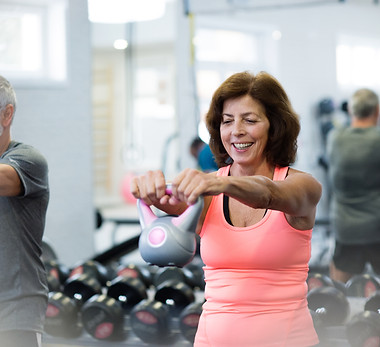
A kettlebell is a flat-bottomed cast iron ball with a handle. They come in different weights. A kettlebell differs from a dumbbell, barbell or medicine ball in that the center of mass is away from the handle, which may require more strength and coordination. Kettlebell swings are the foundation for all kettlebell training. You can do squats, lunges, overhead presses and other exercises unique to kettlebells.
Resistance Bands Exercises
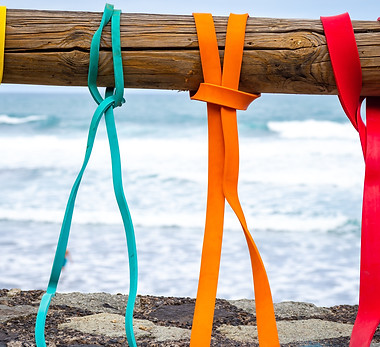
Resistance bands help improve coordination, muscular endurance and joint stabilization. They are great for both seniors and tennis athletes, which can help mimic sport-specific movements.
TRX Suspended Weight Training Exercises
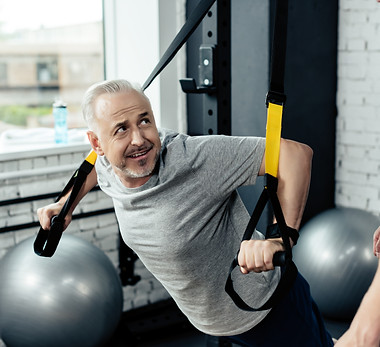
The TRX trainer allows the user to work against their own body weight. For example doing a lat pullup uses your own bodyweight. They also add balance and stability training into the exercise and low compressive loads to the spine.
Cable Pulley Exercises

Cable pulleys are another apparatus to work almost any body part. They provide weighted resistance to you by either standing (triceps pushdown, cables raises, curls), leaning (overhead triceps extension, flyes), being on your knees (Pallof Press) or on one leg (cable pull). Cables also provide a constant tension, targeted muscle isolation and activation of stabilizer muscles.
Medicine, Stability Balls & BOSU Balance Trainer Exercises
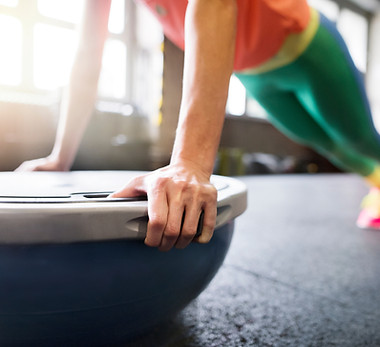
Medicine balls are weighted balls that come in an assortment of weights and sizes, and are made with a variety of materials. They are the oldest means of resistance training going back to the Greeks and Egyptians. They are great for developing power. Stability balls also known as Swiss balls, increase the demand for stability in an exercise, but can also be used to reinforce proper posture during squatting movements. The most popular use of stability balls is in place of benches. The balance trainer is an inflated rubber hemisphere attached to a solid plastic surface. BOSU stands for both sides utilized. They are great for improving balance and stability.
Walking, Jogging, Hiking & Swimming Exercises
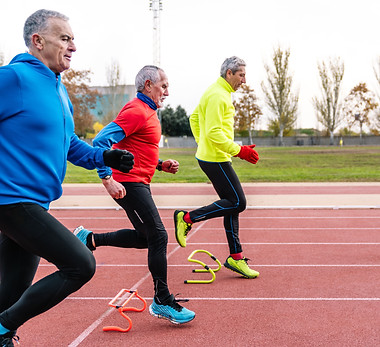
Santa Fe is a great destination for hiking with over 106 hiking trails, 70 running trails, 42 walking trails and more. Walking just 30 minutes a day can help burn calories and improved your heart health. Jogging or using treadmills further helps with heart health and burning calories, while hiking takes it a step further. Hiking also improves balance, coordination and agility and is great for strengthening your ankles and calfs. Swimming is another form of exercise that keeps your heart rate up but takes some of the impact stress off your body. For many, a low impact exercise of swimming is a great choice. There are also many swim aerobic classes you can take.
Chair Exercises

Chair Exercises are a great way to get strength in all body parts. They are especially good if you are just starting out or a Senior with limited mobility. Chair exercises include everything from yoga stretches to resistance exercises with dumbbells and/or resistance bands.
Balance & Stability Exercises

Having good balance and stability is fundamental in lowering the risk of falls and injury. You also need good balance and stability before starting a resistance training program. Balance and stability exercises strengthen your feet, ankles, calves and more by performing exercises that include single leg balance to movement balance exercises such as lunge to balance.

